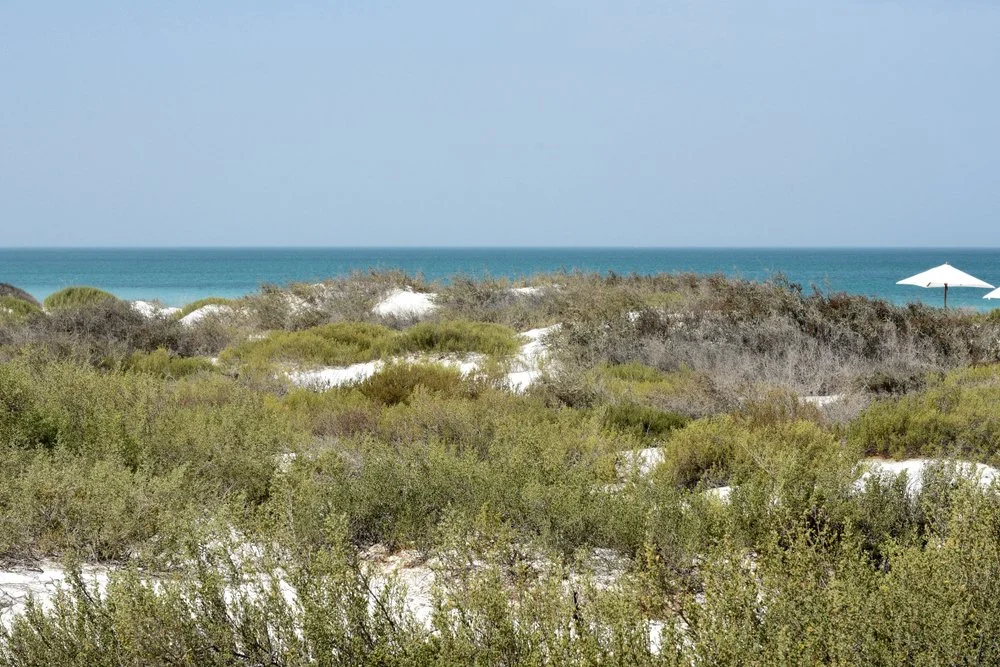Saadiyat's Original Residents
The Hawksbill Turtle Conservation Program
-

The Dune Protection Zone
The conservation efforts begin long before the turtles arrive, starting with a fundamental, island-wide commitment to ecological preservation.
Saadiyat Island has established a 60-metre Dune Protection Zone: a vital coastal buffer area where all development and heavy activities are strictly prohibited.
This unique measure ensures that the natural sand dunes remain untouched, providing the critically endangered Hawksbill sea turtle, the only species to nest in the UAE, with the safe, undisturbed habitat they have returned to for generations.
This dedication to coexisting with nature is a cornerstone of the island’s sustainable luxury ethos.
-

Dedicated Monitoring and Nest Safeguarding
During the critical nesting season (typically March to June), a dedicated team of environmental specialists and community volunteers initiates the Saadiyat Turtle Patrol.
Every morning, the long stretch of pristine beach is carefully surveyed for the tell-tale tracks of a nesting female.
Once a nest is discovered, the location is logged, secured with protective barriers and cautionary signage, and monitored for the 50-70 day incubation period.
This hands-on approach guarantees that the 90-100 delicate eggs in each nest are protected from disturbance by beach maintenance crews, predators, and accidental human interference, dramatically boosting the hatchlings' survival rate.
-

Guiding the Hatchlings' Journey
The final and most crucial phase of the program is ensuring the safety of the newborn hatchlings as they make their perilous journey to the Arabian Gulf.
Hatchlings rely on the light of the moon reflecting on the water to guide them, a process easily disrupted by artificial light.
To counter this, strict operational guidelines are implemented across the entire beachfront: night-time lighting is drastically reduced and dimmed, and all hotels require guests to close their curtains at night to minimise light spill.
This coordinated effort guarantees a clear, dark, and safe pathway, allowing the tiny turtles to successfully navigate the dunes and enter the sea, ensuring the survival and continuity of this majestic marine population for future decades.


